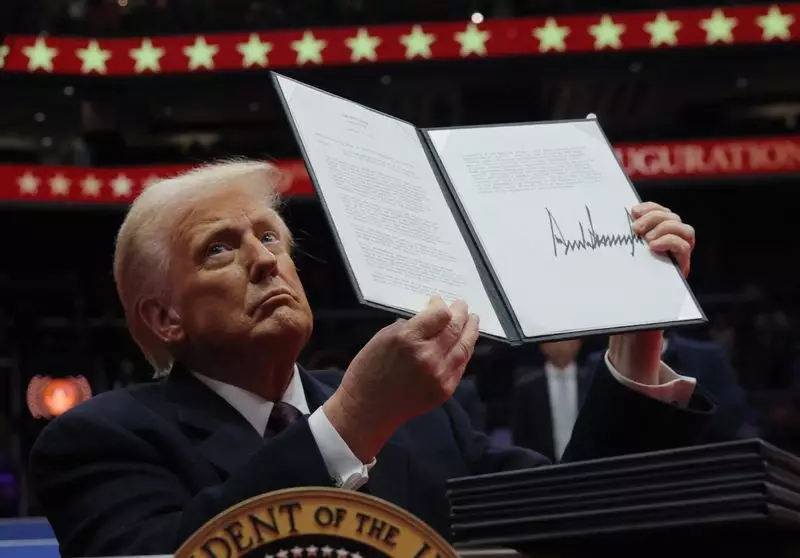In a striking move that seeks to reshape the federal workforce, President Donald Trump has mandated that federal employees return to their offices full-time. This directive, signed during a rally at the Capital One Arena in Washington, D.C., signals a significant shift back to pre-pandemic work conditions, as it effectively dismantles the remote working arrangements that many government employees adopted during the initial phases of COVID-19. This decision raises crucial questions about the future of workplace flexibility within the federal structure and highlights a contentious debate about trust, productivity, and employee satisfaction.
The timing and nature of this executive order are notable, as Trump’s allies suggest that this push for in-person attendance serves a dual purpose. On one hand, it emphasizes traditional work environments synonymous with accountability; on the other, it is viewed as a strategic maneuver to facilitate the removal of entrenched civil servants in favor of loyalists. This political aspect not only underscores potential biases within administrative processes but also reveals intentions to reshape the federal agency landscape under Trump’s vision, potentially undermining the integrity of the traditional civil service model.
By compelling federal employees to relinquish remote work options, this directive could lead to a wave of discontent among government workers who have adjusted to the flexibility of working from home. Many experts argue that this return to the office may diminish morale, leading to an increase in turnover or early retirement. Furthermore, the underlying stressors associated with the pandemic have altered how employees view their work-life balance, and the insistence on full-time return might exacerbate frustrations. Consequently, such policy changes could not only affect current employee well-being but may also deter prospective talent from considering government careers.
Accompanying the mandate is a broader strategy characterized by a hiring freeze and the establishment of the Department of Government Efficiency. This advisory body aims to streamline the federal government, possibly leading to significant cuts across various agencies. As these initiatives unfold, the long-term implications for governance and public service efficiency become increasingly concerning. Experts predict that these policy shifts may lead to a leaner workforce that struggles under the pressure of maintaining service quality and fulfilling public expectations, consequently impacting the overall effectiveness of the federal administration.
President Trump’s directive for federal workers to return to the office full-time is more than just a workplace policy; it embodies a broader narrative around government efficiency, workforce loyalty, and political maneuvering. The interplay between productivity, employee well-being, and administrative strategy will shape the federal employment landscape for years to come. As these changes take root, it is vital for stakeholders to evaluate the holistic impacts of such decisions on federal operations and employee morale, ensuring that vital services continue to meet the needs of the public without compromising the value of the workforce that delivers them.

